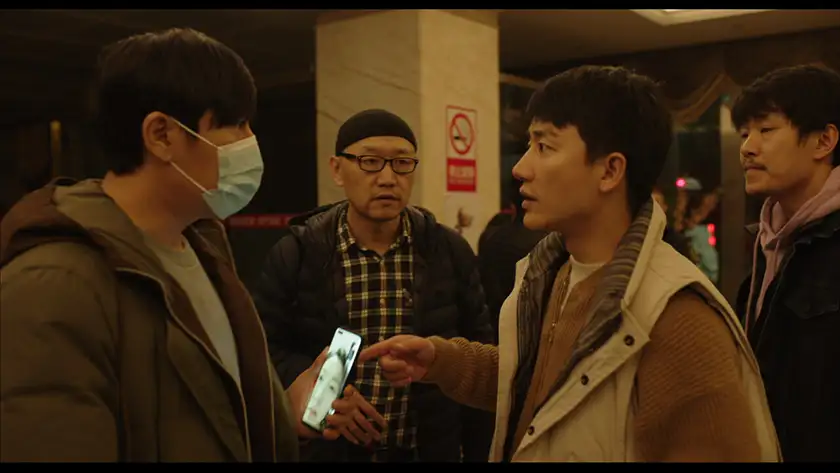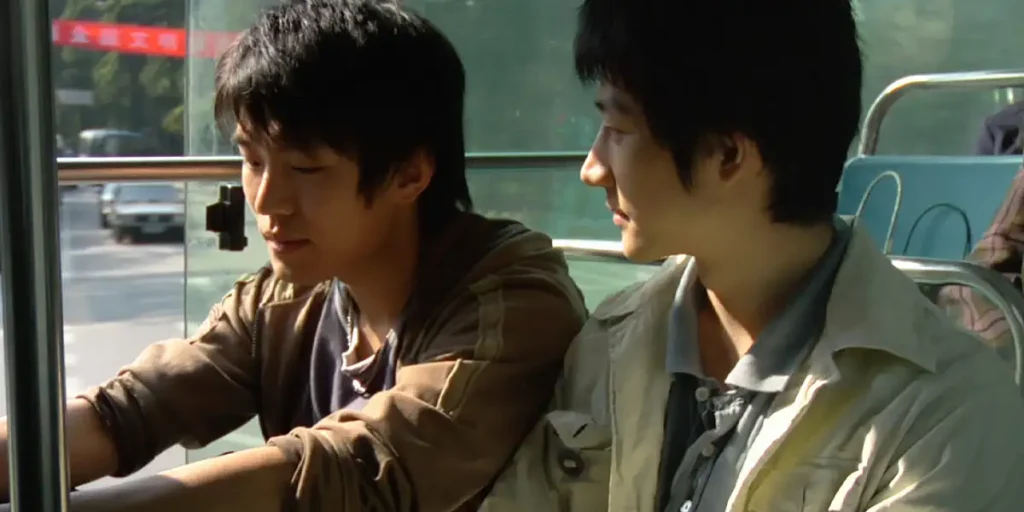An Unfinished Film is a painfully relatable docu-fiction about making a film (and learning to live) during the pandemic.
Director: Ye Lou
Genre: Drama
Run Time: 105′
U.S. Release: March 14, 2025 (limited)
U.K. Release: TBA
Where to Watch: At NYC’s Film Forum, followed by more cities
Lou Ye’s An Unfinished Film is a docu-fiction about the making of a film during the pandemic, shot during the pandemic. The autofictional nature of the movie could not be more apparent: while the narrative is almost entirely fictional, it is shaped by the real events surrounding the production. Multiple cameras are rolling at all times, recording the making of the film to use as material for it.
Any members of the crew you see on the screen are actual crew members working on An Unfinished Film, and the actors, such as Qin Hao and Qi Xi, play fictionalized versions of themselves too. The only person who’s not portraying himself in the film is Mao Xiaorui, who takes the role of the director of the fictional movie instead of Lou Ye.
An Unfinished Film can be pretty cleanly separated into three different acts that progressively collapse under the real life circumstances. That being the pandemic, of course. The traditional cinematic form slowly degrades, and a new cinematic language for the pandemic age emerges, eventually utilizing almost exclusively recorded video calls and phone screens. The resulting anti-film is fascinating to watch, and while initially irritating, manages to encapsulate the pandemic lockdown experience in ways I have rarely seen.
At first, everything is still normal, relatively speaking. The film starts with director Xiaorui (Mao Xiaorui) and a few friends digging out an old computer. There’s footage from an unfinished film on it that they stopped working on 10 years ago. Starring in it is a much younger Jian Cheng (Qin Hao), whom director Xiaorui is trying to convince to come back to finally finish the film.
While the framework around this unfinished project is made up, it is real unused footage from some of Lou Ye’s older works that were repurposed for this. Entire scenes of the unearthed footage are played often uninterrupted, before director Xiaorui and his crew reminisce about the old days when they made it. Letting us take these scenes in fully by ourselves before having characters comment on it makes for a great start to the movie. Just like them, we fall in love with the potential of what has been left unfinished for too long.

After the director has managed to convince his team to finish the old film, we jump ahead into the middle of production. But this part of An Unfinished Film plays more like a thriller, filmed like a documentary. There’s a rumour starting to spread, about some new virus. It’s unclear how serious the situation really is, and if it will affect the production of this film. But then the make-up artist from Wuhan has to be sent home. The production manager is telling members of the crew (who are actual crew members working on the film) to start packing the bigger pieces of equipment up, just in case. And when one person collapses it’s clear that people have to evacuate. But they’re too late; Armed security staff have already blocked off the exits. So they’re stuck in the hotel, each person confined to their own room.
While we might not all be filmmakers, this final third of An Unfinished Film will be painfully relatable to most of us. That feeling of sitting all alone in a room in the middle of lockdown. Any contact with other people is forbidden. The film adapts to the circumstances, and forsakes regular cameras. Instead it utilizes recorded phone screens. While this style of filmmaking may have been born out of necessity given the unfortunate situation, it may have just been the ideal creative decision to tell this story. A story about a bunch of people trapped in their own little square, still seeking interpersonal connections in whichever way they can. The best scene of the film occurs here, when the crew members and people from the outside all come together in a joyful dance even though they’re separated by physical walls.
An Unfinished Film is a weird one. It’s a movie more interested in formal experimentation than it is in crafting a well organized plot. All of the behind the scenes drama and real life circumstances surrounding the shooting are what’s most interesting here. Except that in this case these outside factors influence the contents of the film so much – due to its existence as a piece of docu-fiction, and the layers of metanarrative that are weaved into the story – that they essentially become the film. The result is a fascinating watch.
An Unfinished Film: Movie Plot & Recap
Synopsis:
When director Xiaorui decides to finally complete his 10-year-old film, rumours of a new virus start to spread. Before anyone can make sense of the situation the shoot has to be interrupted once again, and everyone is forced into lockdown. The future of the film and everyone on set is uncertain.
Pros:
- Interesting formal experimentation
- Empathetic depiction of feelings during the covid-19 lockdown
- Layered meta narrative
Cons:
- Can feel too self-referential
An Unfinished Film will have its US theatrical premiere at NYC’s Film Forum on March 14, 2025, followed by a rollout in more US cities. The film will also be screened at the East Asia Film Festival Ireland on March 23.

